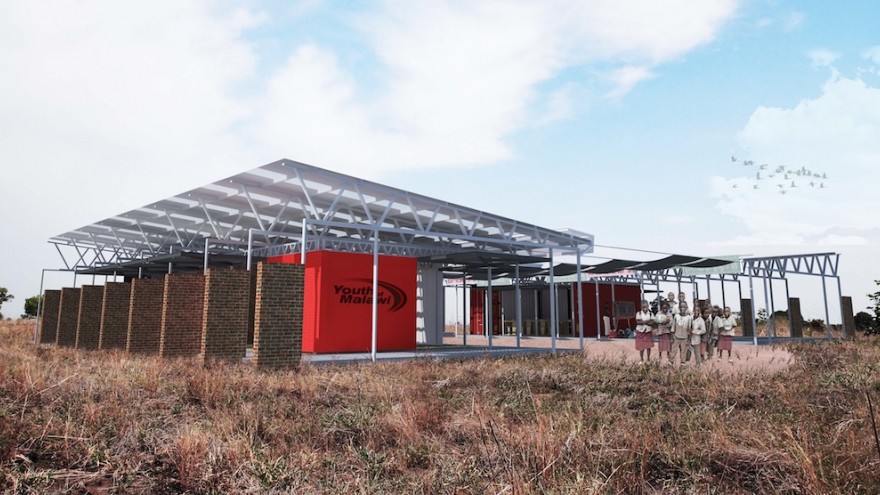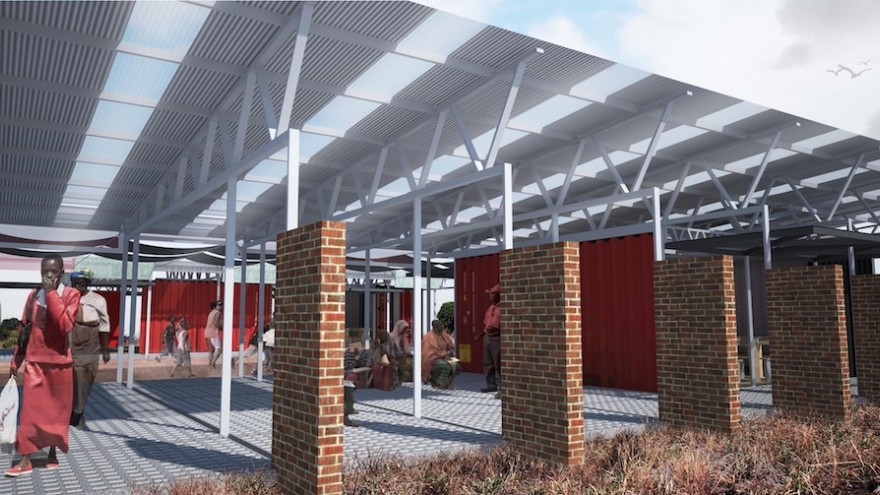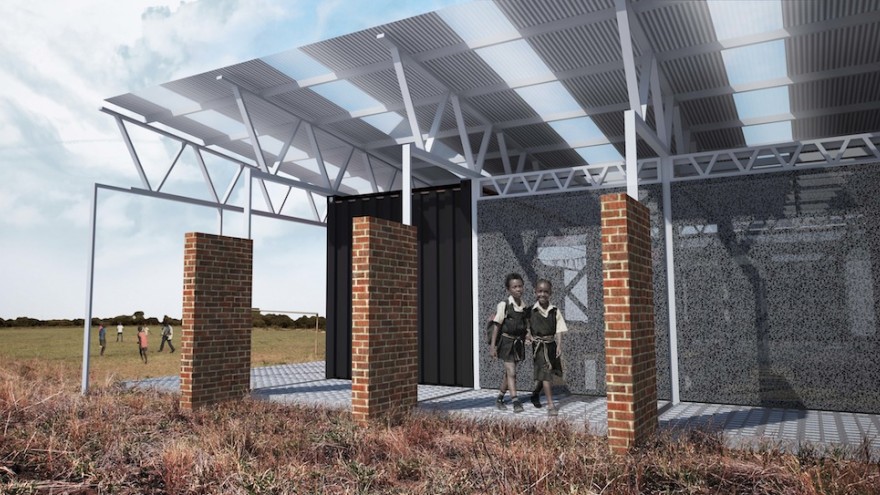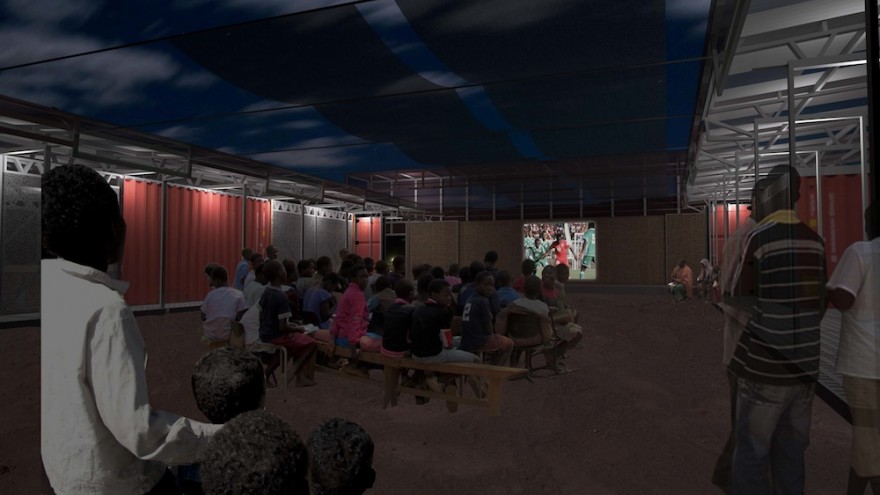The latest community project by Architecture for a Change (A4AC) has shown once again why this South African architecture firm is fast gaining a reputation for innovative, prefabricated buildings. Almost the entire structure for the Legson Kayira Community Center and Primary School in Malawi will be manufactured off site, including lightweight steel, corrugated iron, wire mesh and shade netting.
The architects worked with Youth of Malawi, a non-profit based in New York City, to design an environmentally sustainable and cost-effective school that would accommodate 120 children in the rural village of Chimphamba in north-western Malawi. A key feature of their solution is a corrugated steel canopy that allows for effective shading and cross ventilation.
“The corrugated roof builds up heat, which normally is transmitted into the space below but the gap between the roof and classrooms is kept open to allow cool air to pass through,” said Anton Bouwer, director of A4AC.
The roofs slant downwards slightly to allow rainwater to fall into the gutters that in turn feed two large water tanks. Shipping containers donated by Maersk form the classrooms, with one side panel removed and used elsewhere as walls.
The external walls of the school are screens consisting of metal frames covered with shade netting and wire mesh that open outwards. “This allows the size of the school to expand if necessary,” Bouwer explained.
Locally manufactured masonry and woven grass mats have incorporated to soften the containers as a foreign element in the context and provide the community with a sense of ownership. “We noticed when we were there that a lot of the women weave reed mats to sit on or to use as screen walls. We thought it would be a nice aesthetic to use them in the classroom ceilings. So the men are helping to construct the building and the women to decorate them. This gives locals a sense of involvement and ownership, which is important,” he said.
The rest of the structure is being manufactured at A4AC’s workshop in Johannesburg. The firm is well versed in prototyping their designs themselves.
“Being able to pre-manufacture things enables us to control quality and test before we go on site. With the Mamelodi Pod, for example, we built three different types of wall systems before we chose one that worked.”
Read about the Mamelodi project here.
“Come August, we’ll pack up all the elements into the containers to transport to the site in Malawi,” said Bouwer. Construction is scheduled for completion in mid-October.
Working for a non-profit meant funding was tight but here Bouwer and partners Dirk Coetser and John Saaiman got creative too. They have invited corporates and the public to crowdfund the school through Youth of Malawi’s website. “There is a lack of sustainable funding for projects like this. It would be more sustainable to get government to invest in these types of projects.”
They just may get their wish as the Malawian education department has indicated they are interested in developing more schools like the one in Chimphamba.
This is a prototype that we can produce again and again, said Bouwer. It’s very mobile and erection time is short.
Watch A4AC’s narrated slideshow about this project here.












